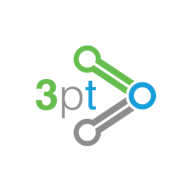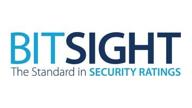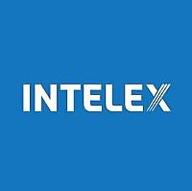Third Party and Supplier Risk Management
The Art of Mastering Third-Party Risk Management
Introduction:
In today's interconnected business landscape, where organizations rely heavily on third-party suppliers and vendors, effective strategies for third-party risk management have become paramount. Implementing best practices for governance and compliance in supplier management is essential to safeguarding an organization's reputation, financial stability, and data security. This article explores the art of mastering third-party risk management, delving into supplier risk assessment and mitigation techniques while highlighting emerging trends in third-party risk governance and compliance.
The Foundation: Effective Strategies for Third-Party Risk Management
Building a solid foundation for third-party risk management involves a comprehensive approach that considers both proactive and reactive measures. Organizations must start by clearly defining their risk appetite and establishing a robust risk management framework. This includes developing a risk assessment methodology that evaluates suppliers based on factors such as financial stability, operational resilience, information security practices, and regulatory compliance.
Furthermore, organizations should implement due diligence procedures during the onboarding process to assess the reputation and track record of potential suppliers. This step ensures that only reliable and trustworthy partners are chosen. Ongoing monitoring and periodic audits of existing suppliers are equally crucial to identify any emerging risks or non-compliance issues.
The Pillars: Best Practices for Governance and Compliance in Supplier Management
Effective governance and compliance in supplier management require a systematic and integrated approach. Establishing clear policies, procedures, and contractual agreements that outline the expectations and responsibilities of both parties is fundamental. These documents should address risk mitigation measures, data protection requirements, business continuity plans, and mechanisms for dispute resolution.
In addition, organizations should foster open and transparent communication channels with their suppliers, promoting a collaborative relationship that encourages regular performance evaluations and progress tracking. This facilitates the identification of potential risks or compliance gaps at an early stage, enabling timely remediation actions.
Unveiling Hidden Threats: Supplier Risk Assessment and Mitigation Techniques
Supplier risk assessment is a vital aspect of third-party risk management. It involves identifying and evaluating potential risks associated with each supplier, their industry, and the specific goods or services they provide. Organizations must implement a structured risk assessment process that considers factors such as financial stability, operational resilience, regulatory compliance, data security practices, and geographic location.
To mitigate these risks effectively, organizations should establish a vendor management program that includes clear risk mitigation guidelines and controls. This may involve conducting regular audits, requiring certifications or independent assessments, and implementing continuous monitoring systems to detect anomalies or suspicious activities promptly.
Keeping Up with the Evolution: Emerging Trends in Third-Party Risk Governance and Compliance
The landscape of third-party risk governance and compliance is constantly evolving. As technology advances and new threats emerge, organizations must stay ahead of the curve to ensure their risk management practices remain effective. One emerging trend is the use of artificial intelligence and machine learning algorithms to automate risk assessments and identify patterns that may indicate potential risks or compliance issues.
Another notable trend is the increasing focus on supply chain sustainability and resilience. Organizations are now considering factors such as environmental impact, social responsibility, and ethical practices when evaluating suppliers. This holistic approach aims to mitigate risks associated with supplier disruptions, reputational damage, and regulatory non-compliance.
Conclusion:
Mastering third-party risk management is a continuous journey that demands vigilance, adaptability, and a commitment to best practices. By implementing effective strategies for third-party risk management, embracing best practices in governance and compliance, employing supplier risk assessment and mitigation techniques, and staying abreast of emerging trends, organizations can navigate the complex landscape of third-party relationships while safeguarding their business interests and reputation.


3 Review
Companies like Intercontinental Exchange, Taylor Fry, The New York Stock Exchange, IAG, First State Super, Akamai, Morningstar, and NASA use UpGuard's security ratings to protect their data, prevent data breaches and assess their security posture. UpGuard Vendor Risk (https://www.upguard.com/product/vendorrisk) can minimize the amount of time your…
Read more about this company

3 Review
ResilienceONE enables vendor risk assessments to protect third-party relationships without the need for additional software. It allows to include outside vendors in recovery timeframe objectives (RTOs) based on potential impact, develops risk-mitigation measures using sophisticated, proprietary risk-modeling algorithms, identify associated processes and…
Read more about this company
3 Review
Using the most INTUITIVE, ROBUST, and CONFIGURABLE platform, we help to assess, build, and continuously monitor sustainability throughout your third-party network.


2 Review
Certa is a no-code workflow and integration engine. Our platform addresses the full lifecycle of direct and indirect suppliers, clients, and agents. It enables 2x faster onboarding, risk assessment, contracting, and ongoing monitoring with lesser efforts and errors.


2 Review
Prevalent takes the pain out of third-party risk management. Companies use our software and services to eliminate the security and compliance exposures that come from working with vendors, suppliers and other third parties. Our customers benefit from a flexible, hybrid approach to TPRM, delivering a rapid return on investment. Regardless of where they…
Read more about this company

2 Review
SecurityScorecard is the global leader in cybersecurity ratings and the only service with over a million companies continuously rated. SecurityScorecard’s patented rating technology is used by over 1,000 organizations for self-monitoring, third-party risk management, board reporting and cyber insurance underwriting; making all organizations more…
Read more about this company

2 Review
ThirdPartyTrust is the third-party risk management platform for companies to connect, assess and share relevant security documentation. Our solution helps information security teams perform vendor risk assessments faster and more accurately via automation and eliminating redundancies in the third-party risk management (TPRM) process. We get TPRM…
Read more about this company

2 Review
BitSight transforms how organizations manage cyber risk. The BitSight Security Ratings Platform applies sophisticated algorithms, producing daily security ratings that range from 250 to 900, to help organizations manage their own security performance; mitigate third party risk; underwrite cyber insurance policies; conduct financial diligence; and assess…
Read more about this company

2 Review
Third party risk management (TPRM) is a structured approach to analyze and control risks arising to the organization from third parties. The third party risk management software is packed with lots of features to truly make it an excellent resource for the risk management departments to manage vendor risk and third party risk.


2 Review
Contingent AI is an AI powered supplier monitoring platform for procurement, compliance and operational resilience leaders. Contingent AI helps organisations proactively predict, assess and monitor third-party and supplier risk. Take the operational resilience of your supply chain to the next level with Contingent intelligence. This is how we can help…
Read more about this company

2 Review
Cyberator is an innovative governance, risk and compliance (IT GRC) solution, that can take a 360 degree view of your cybersecurity program in areas such as people, process and technology utilization and provide quantifiable maturity scores on your entire program, along with a comprehensive remediation plan to address the identified gaps. Our solution…
Read more about this company

2 Review
The DOCUTRAX service facilitates risk transfer from your business to third-parties, such as vendors and contractors, through professional oversight of certificates of insurance (COIs) and other compliance-related documents.


2 Review
SCAIR helps manufacturing companies map supply chains, monitor regulatory incidents & quantify business exposures.


2 Review
A healthy supply-chain, with ample number of potential contractors, is critical to your profits, but don’t assess them out - comply them in. A robust bidding pool not only decreases your risks, it decreases your costs. Provide suppliers critical WFH policies and assessments during sourcing events.


2 Review
Intelex's web-based management systems optimize business performance, enable regulatory compliance, and streamline ISO initiatives through environmental, health & safety, quality management, and supplier management features.


2 Review
ProcessUnity's cloud-based solutions help organizations of all sizes automate their risk and compliance programs.

2 Review
Kodiak Rating is a Supplier Relationship Management platform that provides you with the business intelligence you need to manage risk, optimize supplier performance, increase productivity and create long-lasting supplier relationships


2 Review
The Risk Ledger platform gives organisations of all sizes the tools to identify, measure and mitigate third, fourth, and fifth-party risks at scale and speed for a low per-supplier cost. Our unique secure network model allows every organisation to both run a third party risk management programme and respond to client risk assessments, facilitating a…
Read more about this company

2 Review
Prewave is the leading supply chain risk platform used by manufacturing companies worldwide to improve the transparency and resiliency of supply chains. The artificial intelligence (AI) based platform identify risks in supply chains based on public information automatically and at an early stage. With this information companies have the advantage and…
Read more about this company

2 Review
Get better supplier performance with less cost and inventory using Resilinc industry leading visibility data, expert insights and patented technology.
- Third-party and supplier risk management software refers to a specialized type of software designed to help organizations identify, assess, monitor, and mitigate risks associated with their third-party relationships. It provides tools and functionalities to streamline the entire risk management process, including supplier onboarding, risk assessments, compliance monitoring, performance tracking, and issue resolution.
- Using third-party and supplier risk management software offers several benefits. It centralizes and automates the risk management process, saving time and effort. It enables organizations to have a holistic view of their third-party relationships and associated risks. The software provides real-time visibility into compliance status, helps identify potential risks early on, and facilitates efficient collaboration with suppliers. It also enhances data security and regulatory compliance, ultimately safeguarding the organization's reputation and financial stability.
- When evaluating third-party and supplier risk management software, consider features such as supplier onboarding and due diligence capabilities, risk assessment methodologies, compliance monitoring tools, performance tracking and reporting functionalities, issue management and resolution workflows, data analytics and reporting capabilities, integration with existing systems, and scalability to accommodate the organization's growing needs. The software should be user-friendly, customizable, and provide comprehensive documentation and support.
- Third-party and supplier risk management software is beneficial for organizations of all sizes and industries that engage with third-party suppliers or vendors. This includes but is not limited to sectors such as finance, healthcare, manufacturing, retail, and technology. It is particularly valuable for organizations with complex supply chains, regulatory requirements, and a high dependency on third-party relationships. Risk management professionals, compliance officers, procurement teams, and vendor management personnel can all benefit from using this software.

